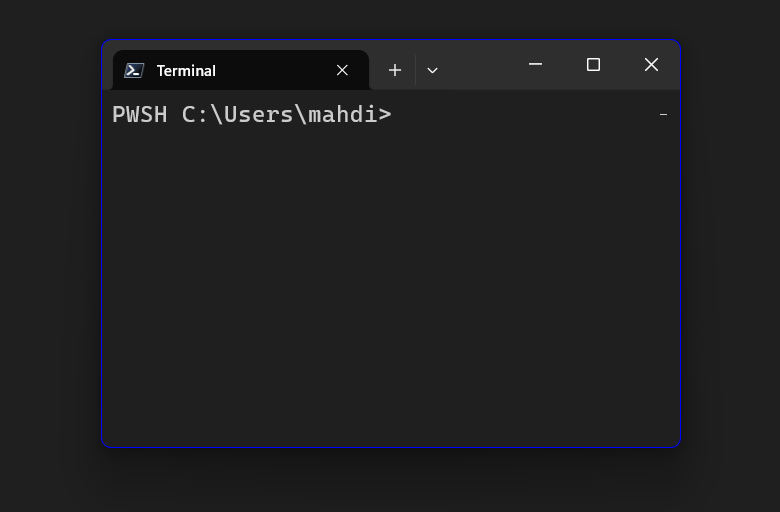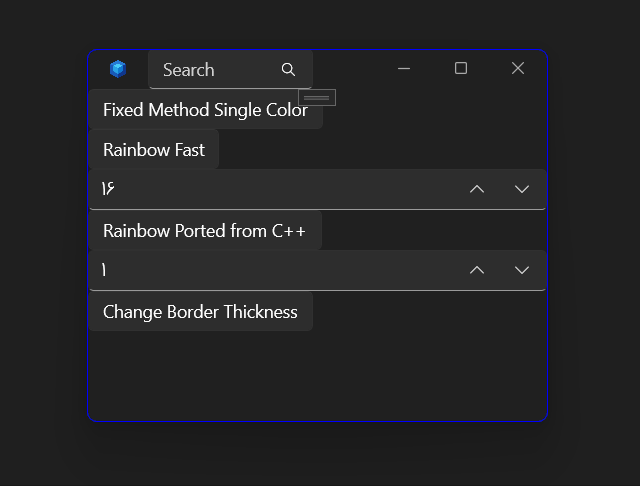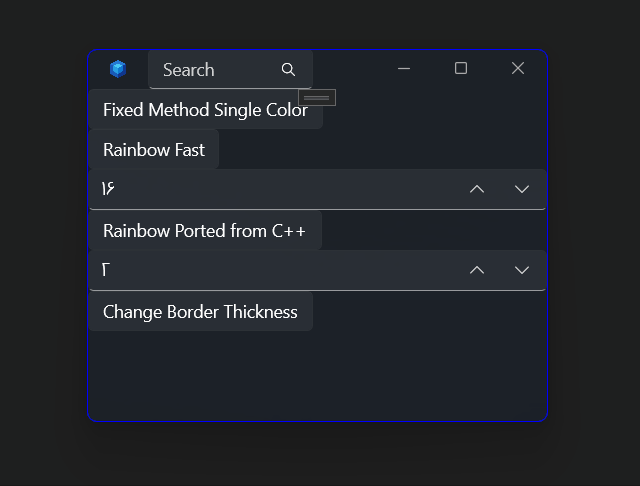i tried to port Windows Terminal Window rainbow border effect from here terminal codes is in c++ and i am working with c# and winui
https://github.com/microsoft/terminal/blob/be9fc200c7b22c544103ec3304ca31c3b984031e/src/cascadia/WindowsTerminal/AppHost.cpp#L1166
i was able to create a window frame with a rainbow effect, however there is some issues and some of the colors is absent for example i dont see red, pink... colors! you can open a Terminal Preview with rainbow effect and compare both app.
first issue is colors like red, pink... is not exist/absent
second issue is last color will wait more and does not change, after a while, color change.
i found out that if i change ignore from 1 to 2, all colors will be available but, last color will be wait longer.
i am not a c++ developer and i dont have any expert in c++. so mybe something is missed in codes.
this is terminal:

and this is my app which colors is missing:

and also this is my app with ignore value = 2, all color is available but last color (blue) take to long to change:

internal class TerminalBorder
{
static double ignore = 1;
static DispatcherTimer _frameTimer;
static DateTimeOffset _started;
private static readonly TimeSpan FrameUpdateInterval = TimeSpan.FromMilliseconds(16);
[DllImport("dwmapi.dll", CharSet = CharSet.Unicode, PreserveSig = false)]
private static extern int DwmSetWindowAttribute(IntPtr hwnd, DWMWINDOWATTRIBUTE dwAttribute, ref uint pvAttribute, uint cbAttribute);
private static void FrameColorHelper(IntPtr h, uint color)
{
//if (Utils.IsWindows11())
//{
//}
DwmSetWindowAttribute(h, DWMWINDOWATTRIBUTE.DWMWA_BORDER_COLOR, ref color, sizeof(uint));
}
public static void UpdateIgnore(double ignoreValue)
{
ignore = ignoreValue;
}
public static void UpdateTheme(double ignoreValue)
{
ignore = ignoreValue;
_started = DateTimeOffset.Now;
StartFrameTimer();
}
private static void StartFrameTimer()
{
if (_frameTimer == null)
{
_frameTimer = new DispatcherTimer();
_frameTimer.Interval = FrameUpdateInterval;
_frameTimer.Tick += (s, e) => UpdateFrameColor(s, e);
}
_frameTimer.Start();
}
private static uint ColorToUInt(Color color)
{
return (uint)((color.A << 24) | (color.R << 16) | (color.G << 8) | color.B);
}
private static void UpdateFrameColor(object sender, object e)
{
var saturateAndToColor = new Func<float, float, float, uint>((a, b, c) =>
{
return ColorToUInt(new Color
{
R = (byte)(255f * Math.Clamp(a, 0f, 1f)),
G = (byte)(255f * Math.Clamp(b, 0f, 1f)),
B = (byte)(255f * Math.Clamp(c, 0f, 1f))
});
});
// Helper for converting a hue [0, 1) to an RGB value.
// Credit to https://www.chilliant.com/rgb2hsv.html
var hueToRGB = new Func<float, uint>(H =>
{
float R = Math.Abs(H * 6 - 3) - 1;
float G = 2 - Math.Abs(H * 6 - 2);
float B = 2 - Math.Abs(H * 6 - 4);
return saturateAndToColor(R, G, B);
});
// Now, the main body of work.
// - Convert the time delta between when we were started and now, to a hue. This will cycle us through all the colors.
// - Convert that hue to an RGB value.
// - Set the frame's color to that RGB color.
var now = DateTimeOffset.Now;
var delta = now - _started;
var seconds = delta.TotalSeconds / 4; // divide by four, to make the effect slower. Otherwise it flashes way too fast.
var color = hueToRGB((float)Math.IEEERemainder((float)seconds, ignore));
FrameColorHelper(WindowNative.GetWindowHandle(App.currentWindow), color);
}
public static void StopFrameTimer()
{
_frameTimer?.Stop();
}
}
